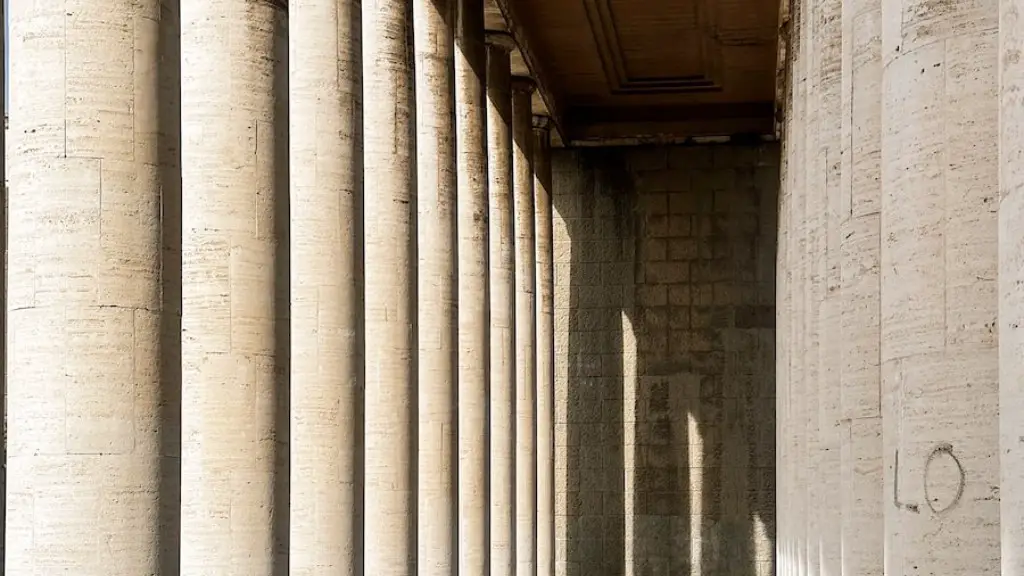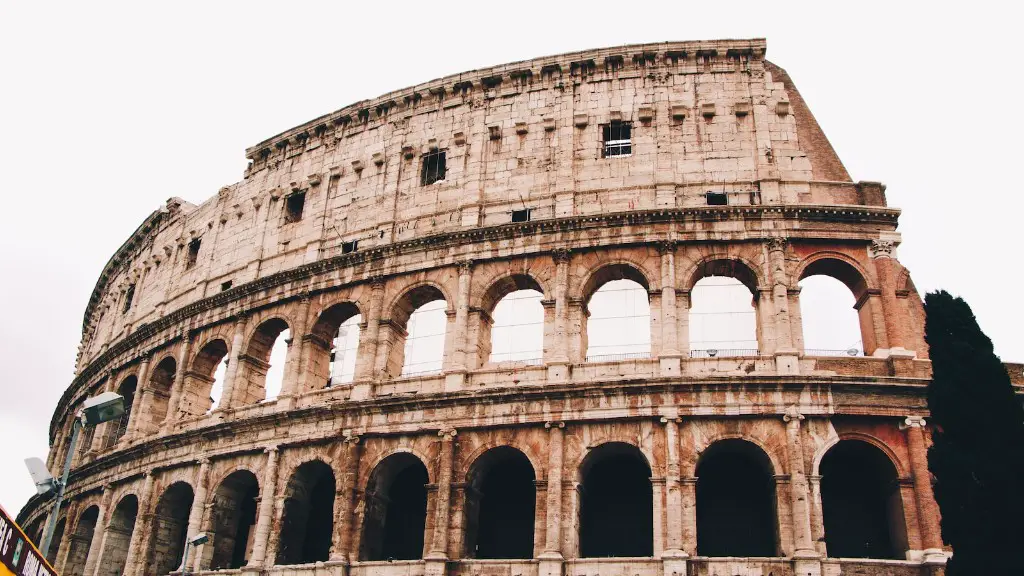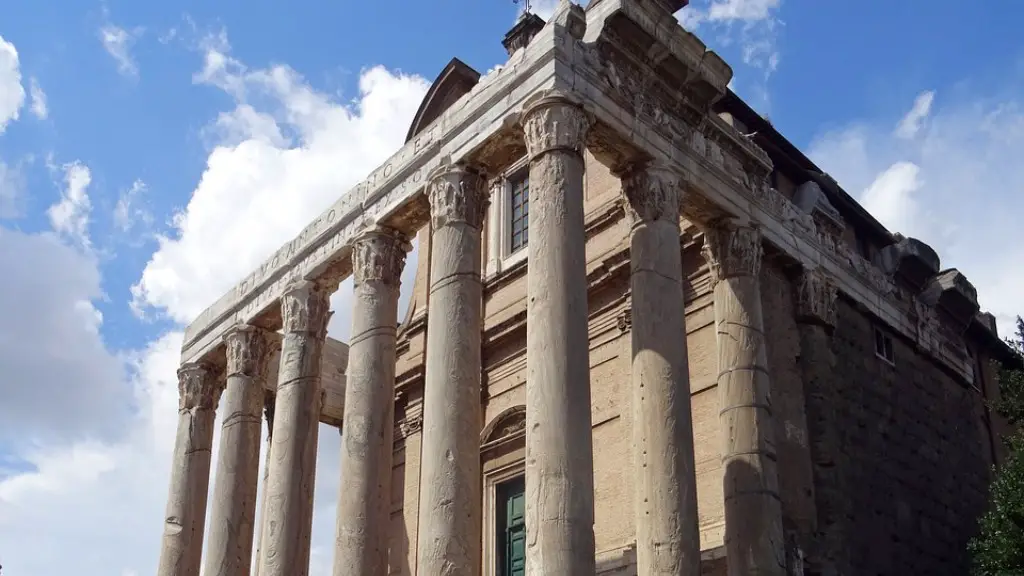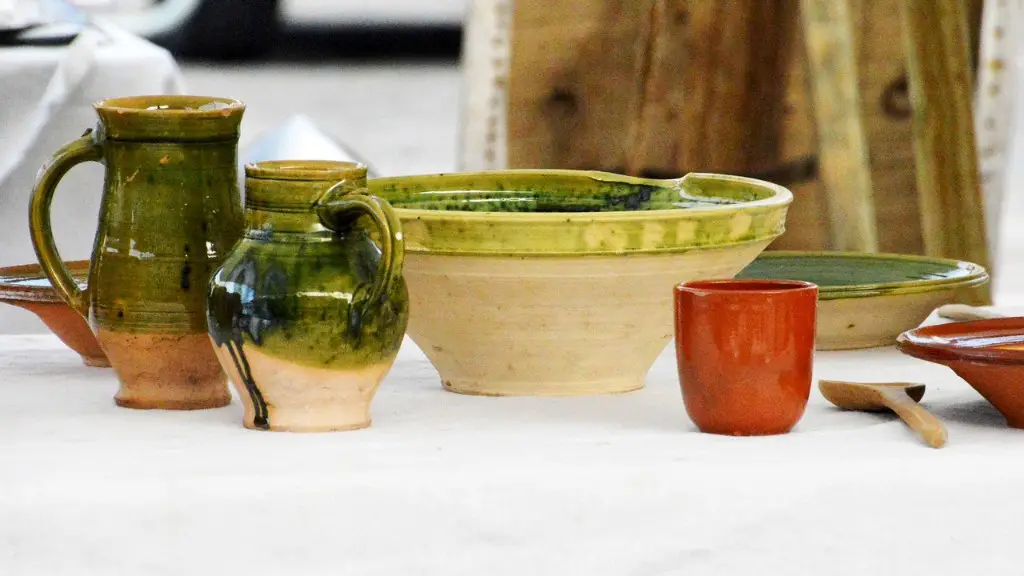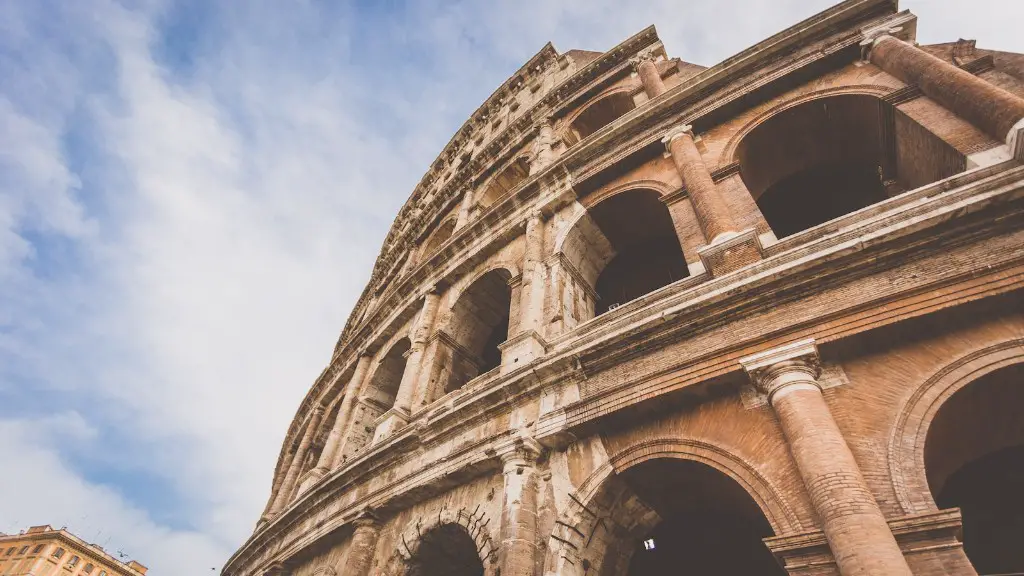When you think of Rome, you typically think of ancient Rome, the birthplace of the Roman Empire and a hub of culture and sophistication. But where in the world is ancient Rome? The truth is, the answer to that question changes depending on who you ask.
For some, ancient Rome is located in Italy and many of its significant monuments and sites, such as the Colosseum, can be found there. More specifically, Rome is the capital of Italy, and the Roman Empire’s capital for centuries. Ancient Rome flourished in the area for hundreds of years, leaving behind its influence as one of the most powerful and influential civilizations of the ancient world. In Italy, archaeologists have uncovered fascinating artifacts from the era that tell us much about the Roman way of life, from housing to clothing to entertainment.
But for others, ancient Rome is more of a mindset—a way of life. Though it certainly was a physical presence in Italy, Rome was much more than just the buildings and monuments. It was a culture of law, architecture, literature, engineering, education, and religion that had a deep and lasting effect on the history of the world. Though the Roman Empire has since come to an end, its legacy lives on in countless aspects of modern day life and culture.
Perhaps the best way to understand ‘Where in the World is Ancient Rome?’ is to look at the legacy it has left behind. The Roman Empire’s political system and government structure are still widely studied today and the legal system established by the Romans continues to influence political and legal systems around the world. Roman architecture is still admired and its influence can be seen in modern architectural styles in many countries. The Latin language, descended from ancient Rome, is still used in many countries and was the language the Romans used to record the great literature of their age, which has since gone on to have a great impact on literature and the world in general.
It was in ancient Rome that much of the technology of the day flourished and developments such as the aqueducts, sewage systems, and infrastructure are still found in many modern cities. The Romans also established a form of democracy, as well as a cutting-edge road system that connected the empire and enabled the people of the time to travel and trade more efficiently.
The influence of ancient Rome is felt in more subtle ways too. The calendar instituted by Julius Caesar in 45 BCE is still the cornerstone of much of our global calendar and the political system of Rome established concepts of citizenship and rights that are still found today. From fashion to industry, art to sport, the legacy of Rome is apparent in many aspects of global society.
Forces that shaped Ancient Rome
In order to understand the essence of Ancient Rome and to fathom it’s far-reaching impact on areas such as art, politics and philosophy, it is necessary to explore the historical forces that shaped it. The legacy of Ancient Rome was built on the political and social construction of the Roman Republic, which was constructed upon Greco-Roman culture, tradition and societal structure.These foundations were comprised of elements such as the Roman Senate and the Twelve Tables, a set of rules and regulations pertaining to daily behaviour, customs and practices in the Roman Republic. Another significant influence included the philosophy of stoicism and the military ethos of the Republic.
The Roman Republic was also determined by the cosmology of Ancient Rome, including the study and acceptance of Greek gods and goddesses, such as Jupiter and Aphrodite. The pantheon of these gods and goddesses held sway over the everyday aspects of life, providing guidance on morality, ethical behaviour and notions of justice and honour. Religion and myth presented precepts and paradigms to shape behaviour, enabling a broad acceptance of the power and influence of Ancient Romes religion and myth. This climate of ideological acceptance provided a deep foundation upon which to build the superstructure of the Roman Empire.
The structure of the Roman Republic was based upon the concept of the mos maiorum or “way of the ancestors”, which provided a code of conduct to which every Roman was expected to adhere. The mos maiorum provided a sense of continuity, binding Romans together in a shared vision of the world and an understanding of political and societal boundaries. It provided guidelines on acceptable behaviour and a reaffirmation of Roman values and beliefs. The mos maiorum was an integral part of the Roman Republic, providing a framework for the laws of the land, assumptions about the limits of acceptable behaviour and a belief in a universal morality.
The Roman Republic was a complex network of interrelated components and forces. The Republic was founded upon the legacy of Etruscan kings, the Age of Augustus, the nobles and knights of the Republic, the mercantile and slave classes and the foundation of two disparate cultures in the form of the Latin and Greek language, culture and belief systems.From this heady mix of elements came Ancient Rome, the Roman Empire, a gateway to the modern world and an intricate web of culture and values.
Art and Culture in Ancient Rome
Ancient Rome was a city of art and culture,whose influence on subsequent civilisations has been profound and enduring. Roman art and architecture has left an indelible mark on the modern world, something evidenced in the variety of monuments, ruins and other reminders of the Roman Empire scattered across the globe. These provide a glimpse into the world of Ancient Rome, a world of splendor, power, and sophistication.
The artistic elements of Ancient Rome were varied, encompassing many styles, eras, and cultural influences. Typical features of Ancient Roman art can be seen in marble sculpture and pottery, both of which display distinctively Roman characteristics. Small-scale relief sculpture was popular in Ancient Rome, particularly in the form of engraved gems and cameo glass. Paintings in Rome also revealed characteristically Roman themes, exploring mythological and religious subjects. Music was also highly prized in Ancient Rome and the countryside was filled with song, just as it is today.
Ancient Roman literature, too, bears the influence of the culture and political climate of the time. Rome’s greatest writers, such as Virgil and Ovid, expressed the peculiarities of Roman life, while inspiring modern writers with their creative works. Similarly, ancient Roman playwrights, orators, and orators, like Cicero and Seneca, left an indelible legacy through their words and works.
Perhaps the most iconic form of Roman art and culture is the ruins of Rome itself, providing an outstanding display of engineering, architecture, and architecture. Many of Rome’s most impressive monuments exist, from the Colosseum to the Pantheon, offering a vivid reminder of the greatness that was Rome.
The Impact of Ancient Rome on the Modern World
Ancient Rome has had an immeasurable impact on the modern world and its influence can be felt in all aspects of life. The sheer scale, complexity, and longevity of the Roman Empire have made it a source of fascination and awe and one of the greatest civilizations in human history.
The Roman Empire’s legacy can be seen in many aspects of modern life, from architecture to language, governance to religion. Roman law is still used in many legal systems and the Latin language continues to be an important and widely used language, especially in the Catholic Church. The Roman concept of citizenship, and its relationship to political power, rights, and obligations, can still be seen in many countries today.
The legacy of Ancient Rome is pervasive and the political system and government structure of Rome serves as a model for other civilizations. The Roman miltary concept of the legions is also widely studied, and the influence of Rome on engineering and technology can be seen in developments such as road networks, aqueducts, and water systems. Roman art, architecture, and literature are still studied and admired today and its varied and nuanced forms of art and culture are lauded around the world.
In short, the legacy of Ancient Rome can be felt everywhere, whether it be in the political and legal system of a modern country, in its art and architecture, or in its literature. The power and sophistication of the Roman Empire has stood the test of time, living on as a source of pride and admiration to this day.
Relevance to the Modern World
In modern times, the relevance of Ancient Rome and its powerful legacy has been widely acknowledged. Much of what we know about the ancient world is still relevant and has implications for the modern world. Our understanding of the Roman Republic and its complex network of interrelated elements provides us with a foundation from which to analyse and understand the modern world.
The principles of governance embodied within the Roman Republic are still influential today, particularly in areas such as law and justice. Roman concepts of rights and duties remain influential, and the emphasis on moral leadership and personal responsibility is still a source of instruction for modern leaders. The principles of justice, equity, and honour taught in the Roman Republic are still held in high esteem today.
The artistic elements of Ancient Rome continue to reverberate in the modern world, providing us with a vision of what was possible in the past and what is achievable in the present. Ancient Roman art and architecture continues to inspire modern architects and artists, while its literature and philosophy remain important sources of information and recreation. The Latin language is still in use, reminding us of the great literary works of this era, while Rome’s music and theatre continue to inform and entertain audiences.
The legacy of Ancient Rome is felt everywhere throughout the world and it’s influence is both wide and deep, touching virtually every aspect of modern life. It is true that the foundations of modern society were laid in the era of Ancient Rome, and its legacy is still evident in many aspects of our daily lives today.
The decline of Ancient Rome
Ancient Rome rose to greatness and left behind a legacy that still endures. But, as with all empires, Rome eventually declined and ultimately fell from power, leaving behind a period of chaos and instability in its wake.
The decline of Ancient Rome can be attributed to a variety of factors, including political unrest and instability, economic decline, social unrest, and religious conflict. Political unrest was caused by struggles between the Senate, the Emperor, and the Plebians, and by the shift in power between Julius Caesar and Augustus Caesar. Economic decline was marked by increased taxation, a decline in trade, and a dwindling treasury. Social unrest and rebellion were commonplace, with plebian uprisings and civil wars throughout the Republic.
Rome’s decline was also marked by religious conflict and the rise of Christianity, which found itself in opposition to the traditional Roman pantheon. Christianity’s message of hope and salvation found a receptive audience and Rome’s traditional religion was slowly supplanted by this powerful new force.
The decline of Ancient Rome was a slow and protracted process, the result of a number of internal and external factors, most of which can be traced to the period of political, economic and religious turmoil that marked the end of the Roman Republic and the dawn of the Roman Empire.
Later Revivals in Ancient Rome
Despite its decline, Ancient Rome did enjoy revivals throughout its history, with the later Roman Empire regaining some of the former glory of the Republic. These revivals were often marked by significant political and economic changes, accompanied by military triumphs and a renewed sense of civic pride.
Most of Rome’s revivals were driven by strong leaders and political figures, such as Augustus and Constantine, who rose to power and brought about changes that had a lasting effect on the future of the Empire. Augustus, for example, not only restored a sense of stability to the Empire, but he also was responsible for giving Rome the vast network of roads and aqueducts that made travel and communication easier. Constantine, meanwhile, was a great patron of the arts and was instrumental in spreading Christianity throughout the Empire.
The last revival of Ancient Rome came under the rule of Justinian I, who managed to restore much of the former glory of the Republic. Justinian’s reforms revitalised Roman law and reinstated the Senate, while restoring much of the former territory of the Empire. Justinian’s efforts were short-lived, however, and the Western Roman Empire soon collapsed, marking the end of the Roman age.
Legacy of Ancient Rome
Despite its decline, the legacy of Ancient Rome endures to this day. Its influence can be seen in almost every aspect of modern life, from the political and legal systems of countries to the
